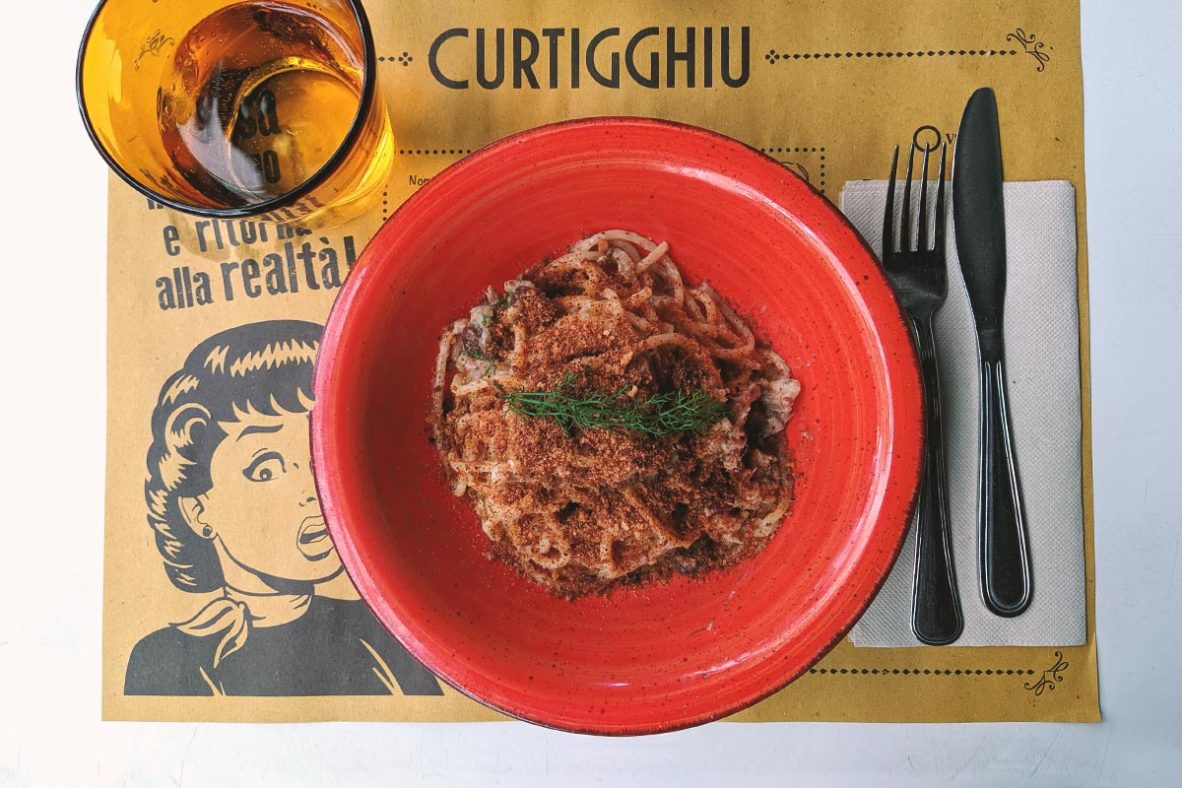Fresh sardines , fennel, pine nuts: if you are a lover of pasta with sardines , you will know that any variant of this recipe includes at least these three basic ingredients for the happiness and success of the dish.
For Sicilians it is a real must of the tables, a traditional recipe that has its origin in far more remote times than you can imagine. In fact, it is necessary to make a leap of over 1200 years, to a distant day in Mazara del Vallo (or perhaps in the parts of Syracuse, depending on the sources) where hunger and lack of ingredients were the necessary premises for this tasty invention.
And no, his first cook was not a Sicilian: like so many other treasures, both tangible and intangible, we inherited it from the Arabs.
The story of pasta with sardines is a story of love, rebellion … and a spirit of adaptation.
We are in the ninth century and it all begins with Eufemio da Messina , commander of the Byzantine fleet, protagonist of a series of attempts at independence of the island but finally exiled for a scandalous fact: it seems he had seduced nothing less than a nun, Omozia, trying to convince her to leave the votes.
Taking refuge in Africa, he makes an alliance with the Saracens here and, with them, he sets sail in search of revenge for Sicily. Supplies are scarce and a stormy night, unleashed by the fury of Aeolus, Zeus and Thanatos, exhausts the troops by engaging them in a fight for survival until dawn.

How to refresh the exhausted militias and motivate them to resume the campaign? This is where the anonymous Arab cook takes the field, accompanied by Eufemio. Starting from the few ingredients he can find (in Mazara del Vallo? In Syracuse? It doesn’t matter!) And assembling them with criteria: sardines that are not really fresh, fennel that would cover and accompany the flavor of the fish, pine nuts , pasta of wheat and, in honor of its Arab origins, of saffron .
What comes out of it? A lifesaving dish for poor soldiers exhausted by battles and spite of the gods, and a recipe handed down over the centuries to the present day.
Ah, and beyond the table: in fact, that military campaign marked the beginning of a new era for the island and beyond. Nothing less than the landing of the Arabs in Sicily and the beginning of the Islamic conquest.
The following may seem obvious, but in everyday life, taken by haste or supermarket habits, we often content ourselves with preparing a dish that “looks like” rather than re-proposing what the original flavor should be. Maybe not exactly that of 1200 years ago and of the Arab cook, but at least that of our grandmothers, who knew and know a lot about flavors.
Sardines, in fact, not anchovies . Sardines have different characteristics than anchovies: they are a fattest fish, which should be eaten a few hours after fishing and which, to give the best of its flavor, should be cooked fresh and not in oil.
For the most Carthusian cooks, the procedure to ” allinguare “, or reduce as a “tongue”, the sardines is the following: they must be opened like a book and cleaned, the bones, head and tail must be removed. Then they must be washed and dried. They are now ready to be involved in your creation.
Although it was already used in ancient Rome to flavor fish, over time fennel has been forgotten by many culinary traditions and in most of the world it is not even harvested.
Also for this reason – as well as for the Sardinian itself, certainly not the most delicious fish on the counter – pasta with sardines in Palermo is also called pasta ca munnizza (translated, pasta with garbage): that is pasta with those ingredients that for some they are weeds, for others, and here the sardines come into it, they are used as the waste to be given as bait to other fish.
Wild fennel can be bought fresh (or found in nature!) Between spring and autumn . The most tender and green parts must be selected, as well as buds and “feathery” leaves. Does this mean that you can’t eat pasta with sardines at Christmas? Sicilians could not do without it: fennel, in fact, can be frozen and used when necessary.
It is the ingredient that gives the pasta its typical dark color, as well as the main protagonist of the flavor and smell of the dish. Translated? Better to abound!

Pasta with sardines with Curtigghiu
Adding sauce, white wine, sacrilegious exchanges of anchovies with sardines and saffron with turmeric and so on: over time, as well as in space, each province has appropriated the recipe by creating its own micro-variant. On passing it to the bottom at a later time, another parenthesis opens: that is the art of recycling leftovers (in Sicilian, restatures ). In Agrigento, for example, tomato paste is added in the preparation. In Catania, as well as in other parts, we sprinkle it with toasted breadcrumbs .
Such a popular and traditional dish… could it be missing from our menu, which bases its proposal on these pillars?
The recipe we follow at Curtigghio tries to be as faithful as possible to the original: the inevitable sardines and fennel, the pine nuts already used by the Arab cook of Eufemio da Messina, a touch of sweetness given by the raisins and, as just mentioned, the breadcrumbs that gives that crunchiness that never hurts.
Sicilian ingredients, Arab flair, fury of the gods, passion and revenge: how much history for a single dish, which is already waiting for you in via Santa Filomena 43!
Curtigghiu si trova in due bellissime città, tra i ristoranti a Catania centro e Palermo, al parco commerciale I Portali di S. Giovanni La Punta. È un ambiente che stimola la chiacchiera e la condivisione, dove poter godere della cucina del sud Italia e di ottime pizze in pala e panini sentendosi come a casa!
P.IVA IT03670480874
Via Santa Filomena n° 10/12 - Catania 95128
©2025 Curtigghiu | Tutti i diritti riservati.